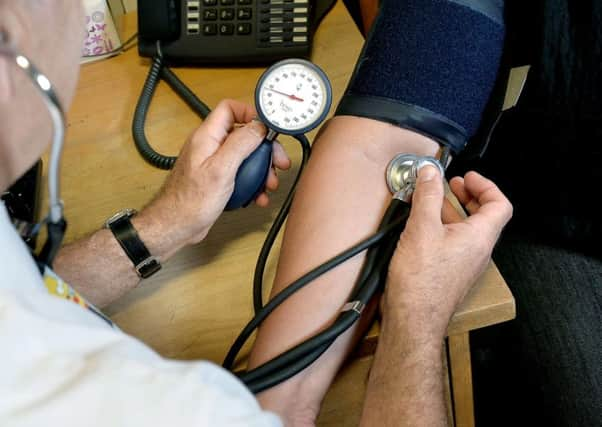UV light treatment 'could save cash-strapped NHS millions'


A team led by Dr John Foerster from the university’s school of medicine, found the annual cost per patient of filtered UV light treatment (known as photothrapy) was around £250 - one-sixth of the cost attributed to phototherapy by the National Institute for Health and Care Excellence (NICE) and a fraction of the estimated £7-12,000 annual cost of injectable biologic therapies.
Dr Foerster said health boards could save more than £1million annually by improving availability of UV therapy.
Advertisement
Hide AdAdvertisement
Hide AdSteroid creams are frequently prescribed for skin diseases but can cause serious side effects and can prove inadequate to bring diseases such as psoriasis and eczema under control.
Patients may then be referred for more intensive treatment, which could include pills, injections or UV light which are more expensive than using the UV light treatment from the beginning.
UV light/phototherapy involves safe, controlled delivery of narrow wavebands of ultraviolet radiation in specially constructed cabins. The Dundee team had previously shown that three-quarters of patients experienced significant improvements after phototherapy and that the need for steroid creams was reduced by 25 per cent.
Access to phototherapy across the UK largely depends on a patient’s location, though Scotland is relatively well served.
Dr Foerster and his colleagues examined the costs involved in delivering phototherapy at sites in city, large town, small town and rural settings.
In addition to breaking down the staff costs of those actually delivering the treatment, they also factored in expenses relating to administration, training, pensions, medical physics, equipment, depreciation and consultant supervision.
Dr Foerster, whose research was published online by the British Journal of Dermatology, said: “A shortfall of much health economics research is that number-juggling is very often not representative of real life.
“To overcome this, we looked at four very different sites over nine years.
Advertisement
Hide AdAdvertisement
Hide Ad“We made no assumptions but instead went bottom up and detailed every penny spent.
“We itemised every staff member, every percentage of their job plan dedicated to phototherapy and could see that the health board spent only an average of £257 for an entire treatment course over the last nine years.
He added: “That is phenomenally cheap because when phototherapy clinics are set up they are very efficient operations.
“People trained to do this procedure are able to administer treatments for many different patients and only have a very short hands-on time for each. We were very thorough in our evaluation. There were no indirect costs we didn’t consider.
“Set-up costs in areas where phototherapy is not currently available is something we also considered.
“When new therapies are assessed by NICE or the Scottish Medical Consortium, they look at not just how beneficial these are to patients but also how economical they are.
The NICE appraisal puts the cost of phototherapy at £1800 per treatment. Our data will require this to be corrected, which we hope will have positive implications for sufferers of skin diseases.”
A spokeswoman for the Scottish Government said: “Scotland has a strong record of leading the way in health innovations and there is a range of NHS support and treatments available for skin conditions.
Advertisement
Hide AdAdvertisement
Hide Ad“However all clinical decisions should be made following discussions between the patient and their doctor, based on established guidelines.
“NHS boards take decisions on whether to adopt new technologies based on their safety and proven clinical and cost effectiveness. We would expect them to consider these factors when assessing whether or not to use UV light treatment in the future.”